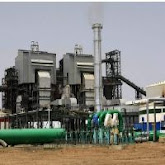The process of making sugar by GangaKhed Sugar
Sugar plays a vital role in our daily lives as a sweetener for our food and drinks and a source of energy for our bodies. Sugar is a carbohydrate that our bodies use to produce glucose, which provides the energy needed for our daily activities.
However, it's important to note that excessive sugar consumption can have adverse health effects, such as weight gain and an increased risk of diabetes and other chronic diseases. As with most things, moderation is key in sugar consumption. It's important to mind the amount of sugar we're consuming and make an effort to reduce our intake if necessary.
Overall, sugar from GangaKhed Sugar is an integral part of our daily lives, providing energy and enhancing the flavour of our food and drinks. However, it's essential to consume sugar in moderation and to prioritise a healthy and balanced diet.
Having said that, have you ever imagined the sugar you consume and what it has to go through to reach your taste buds? Here in this blog, we will discuss the processes involved in making sugar step by step.
1. Harvesting
Needless to say, the first step in the making of sugar is harvesting. First, all the raw materials needed for sugar, sugarcane and sugarbeets are harvested manually from the fields. It is then made to go through several sieving processes to remove all the dirt and rock particles before moving ahead.
2. Cleaning and preparations
Everything that is going to be consumed has to be washed extensively. Similarly, once the sugarcanes and sugarbeets reach the GangaKhed Sugar Factory, they are washed extensively with water. Several processes include water spraying or rotating drums used as water stations. In the same process, the water is sprayed on the drums, and the products rotate within the drum.
Once the sugar cane or sugar beets have been thoroughly washed, they are transported into the factory using either screws or belts. The sugar cane is then crushed with swing-hammer shredders or heavily grooved crusher rollers, while sugar beets are cut into thin slices, using slicing machines. Next, the strips are soaked in hot water while the crushed sugar cane is sprinkled or sprayed with hot water. These processes enlarge the plant cells in readiness for the extraction process.
3. Juice Extraction
Sugar cane is crushed using swing-hammer shredders or heavily grooved crusher rollers, while sugar beets are cut into cossettes. The juice extraction process involves pumping the sugar cossettes into the bottom of tall tanks, where sugar is extracted by rotating the shaft in the centre of the tank. For sugar cane, a series of five mills are used to compress the sugar cane fibres and separate the juice from the bagasse.
4. Purification
Next in the process is the purification of the juice extracted. According to Ganga Khed Sugar news, the sugar juice extracted from the previous process is acidic and slightly dark. Sugar cane is squeezed using heavily grooved crusher rollers, while sugar beets are cut using slicing machines, which tear them into strips called cossettes. The juice extraction process involves pumping the sugar cossettes into the bottom of tall tanks, where sugar is extracted by rotating the shaft in the centre of the tank. For sugar cane, a series of five mills are used to compress the sugar cane fibres and separate the juice from the bagasse.
5. Crystallisation
A series of vacuum evaporators are then used to boil the clarified juice to a sugar concentration of 50%–65%. It produces a thick, nearly colourless sugar syrup crystallised using a single-stage vacuum pan. The massecuite, a dense mixture of syrup and sugar crystals, is then transferred into a large container called a crystalliser. The massecuite is gradually stirred and cooled, continuing the crystallisation process.
Also read: What Is the Appetite for Sugar?
6. Centrifugation
To separate the final products, sugar crystals and molasses, the massecuite is put into a high-speed centrifuge, which spins at the rate of 1,000 to 2,800 revolutions per minute, containing a perforated metal cylindrical basket. During centrifugation, the molasses is drawn to the outside of the centrifuge and removed to storage tanks, while the sugar is retained in the lined centrifuge basket. The sugar crystals are then dried in huge, hot air dryers, reaching a point where the moisture content of as low as 0.02%, and tumbled through heated air in a granulator. Finally, the dried crystals are separated into different sizes through vibrating screens and packaged for the consumer.
GangaKhed sugar, owned by Ratnakar Gutte, has been in the news for its modern and efficient sugar production techniques in GSEL Maharashtra. The company prides itself on its sustainable practices, ensuring that every part of the sugarcane plant is utilised, including bagasse, which is used as a fuel source. The sugar produced by GangaKhed Sugar is of high quality, meeting the standards set by FSSAI. The sugar-making process is vital to the economy and plays a crucial role in the food industry, providing a vital ingredient in many food products and beverages consumed worldwide.

Comments
Post a Comment